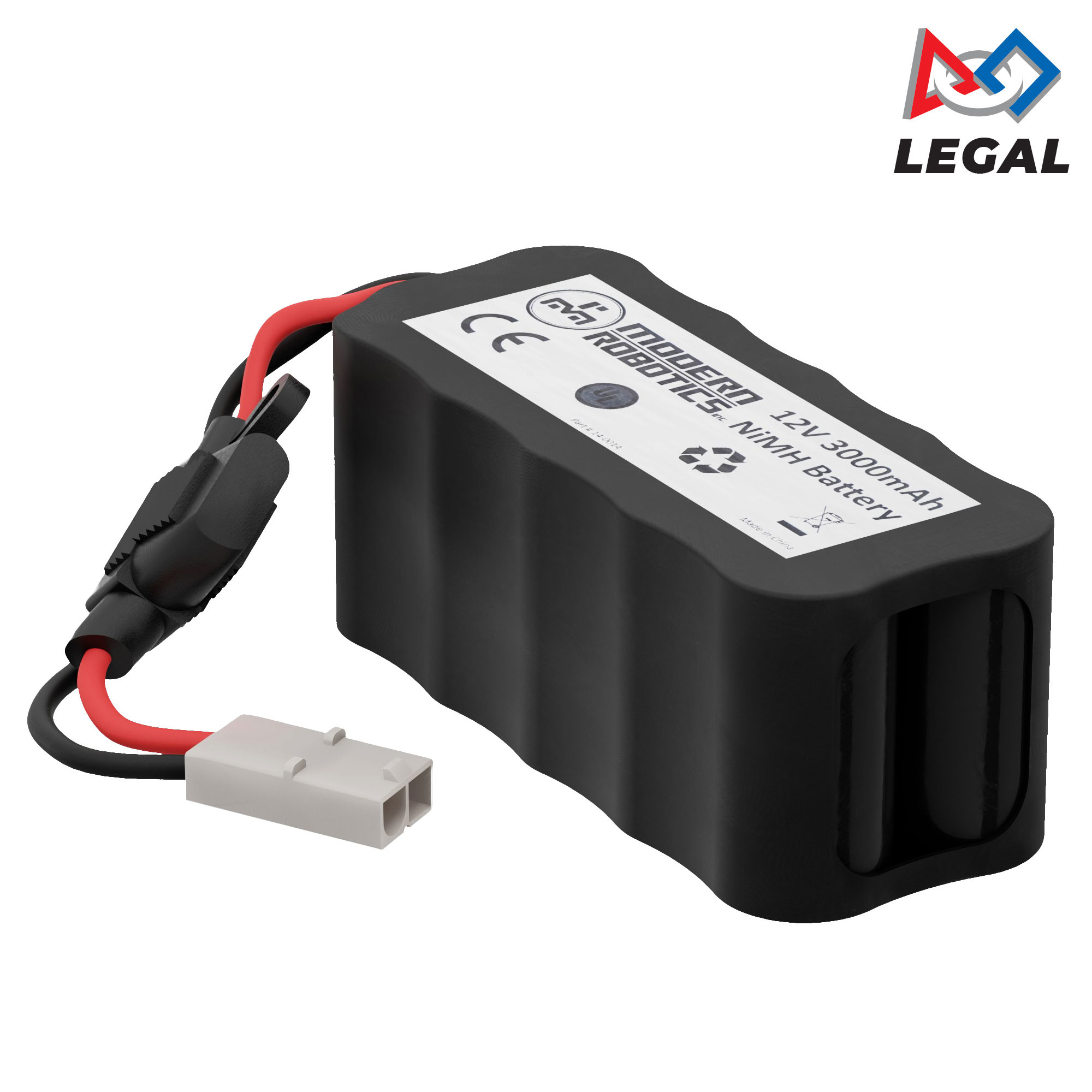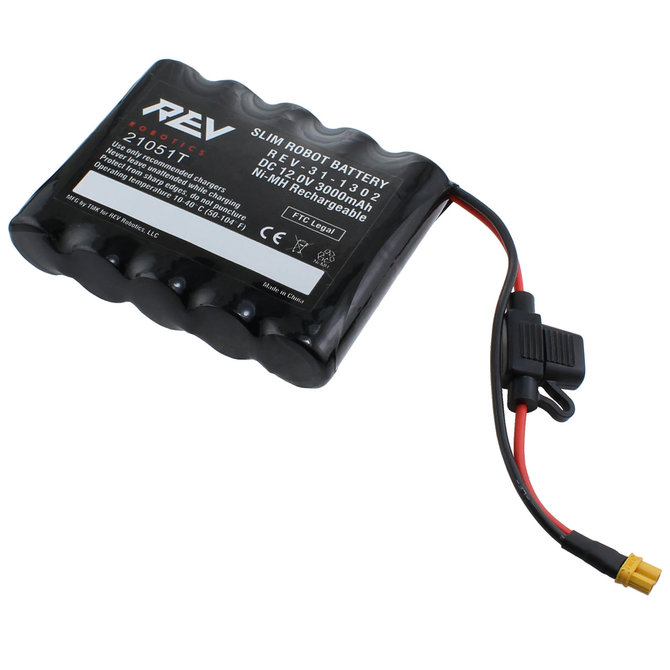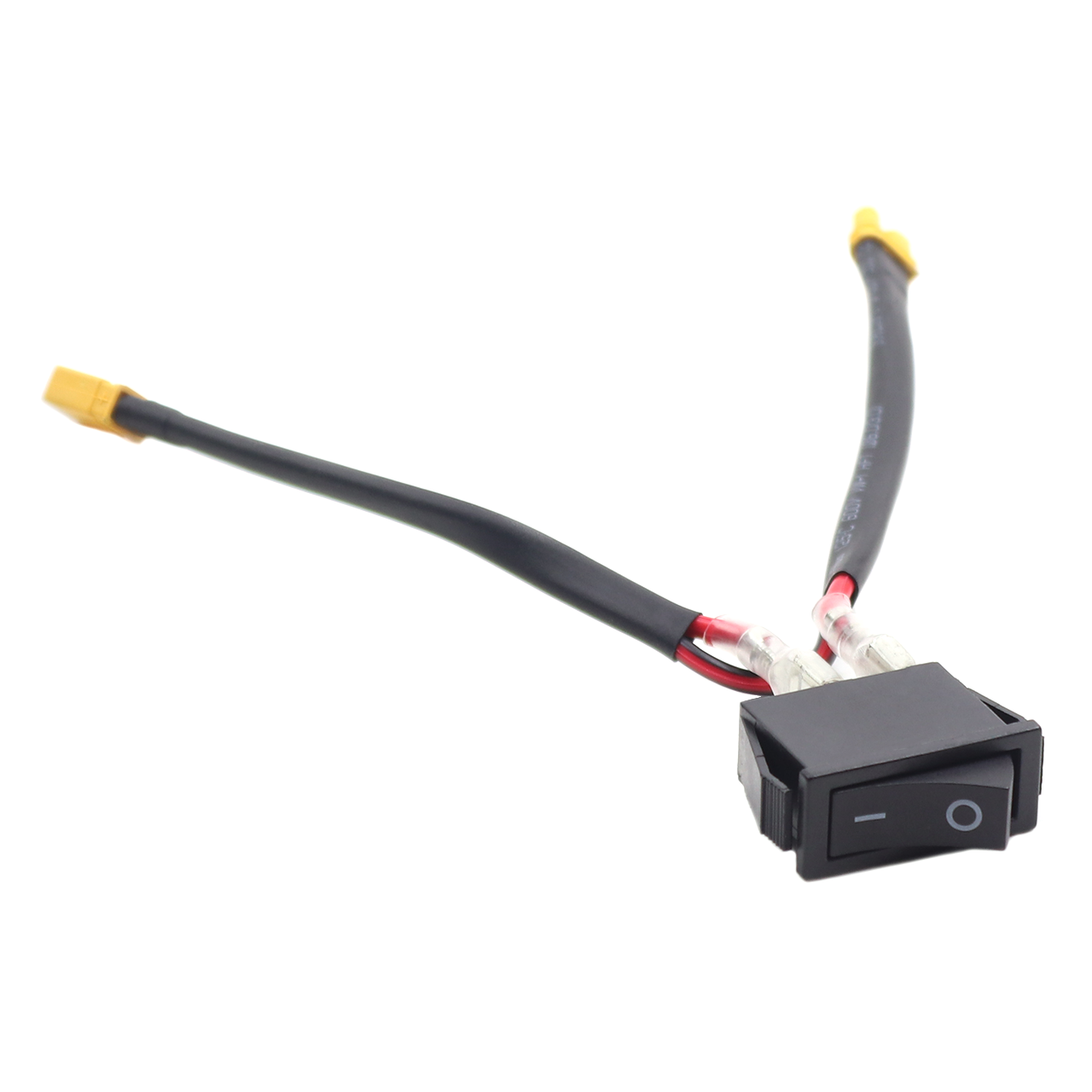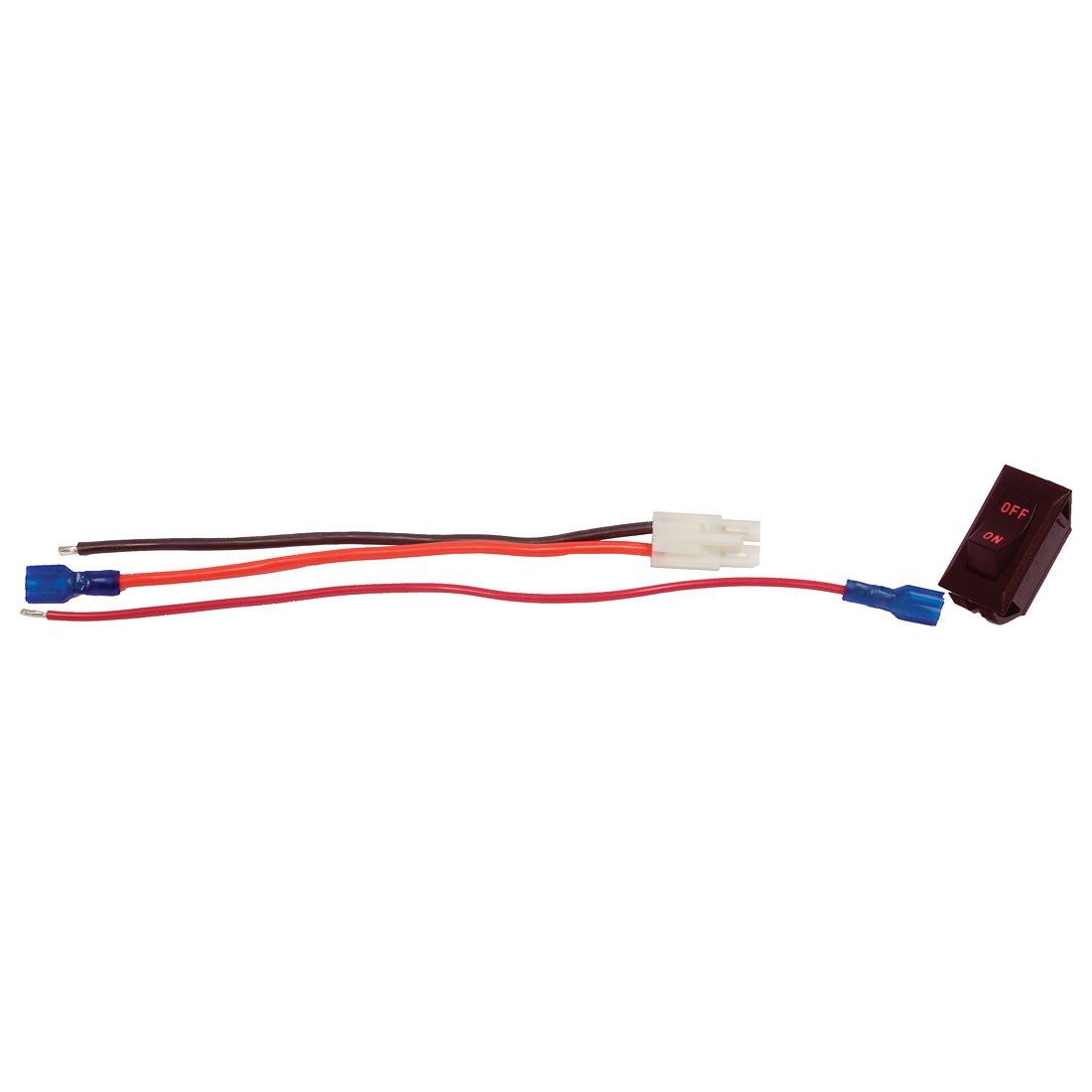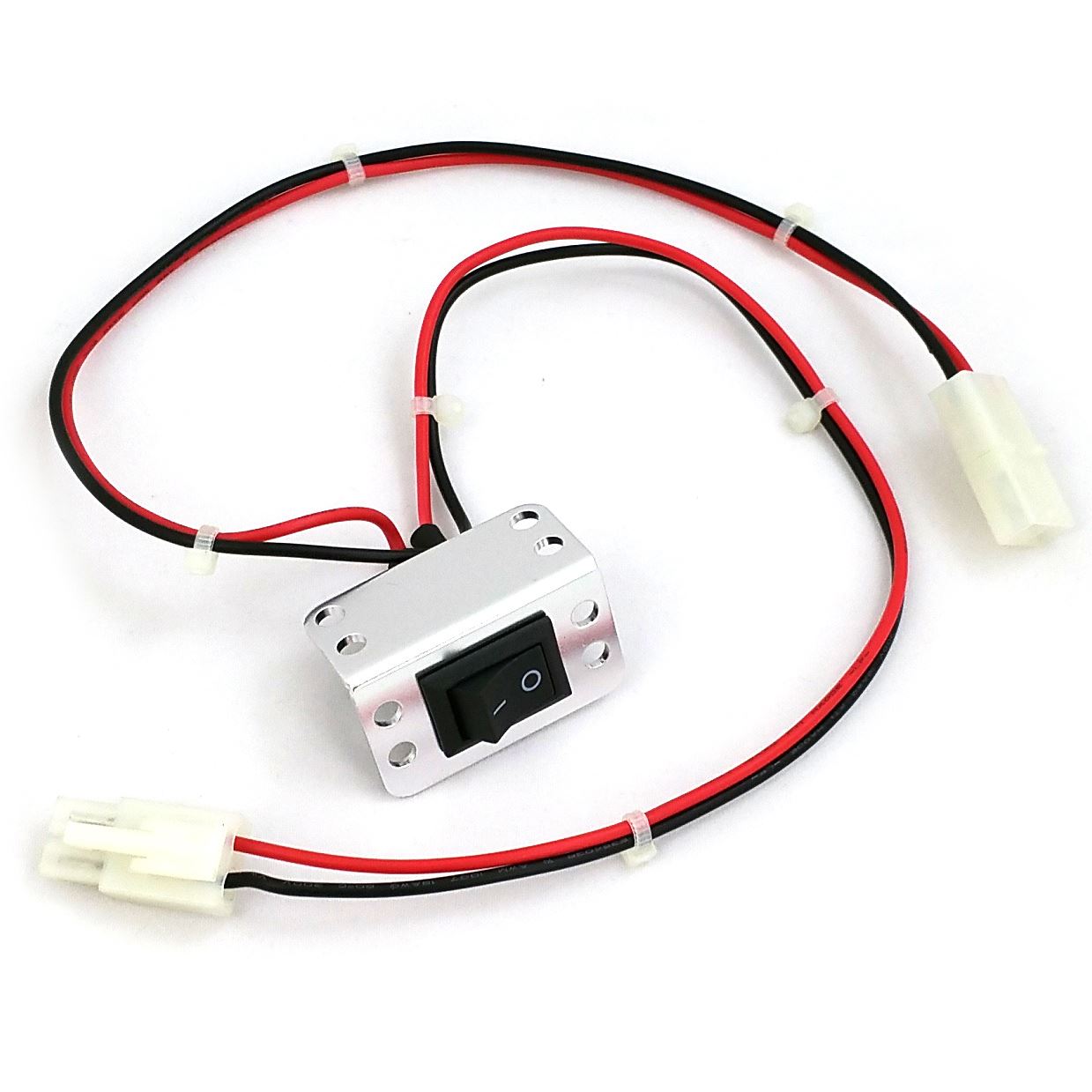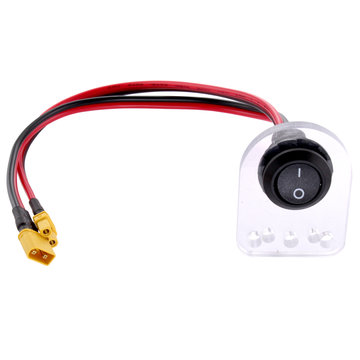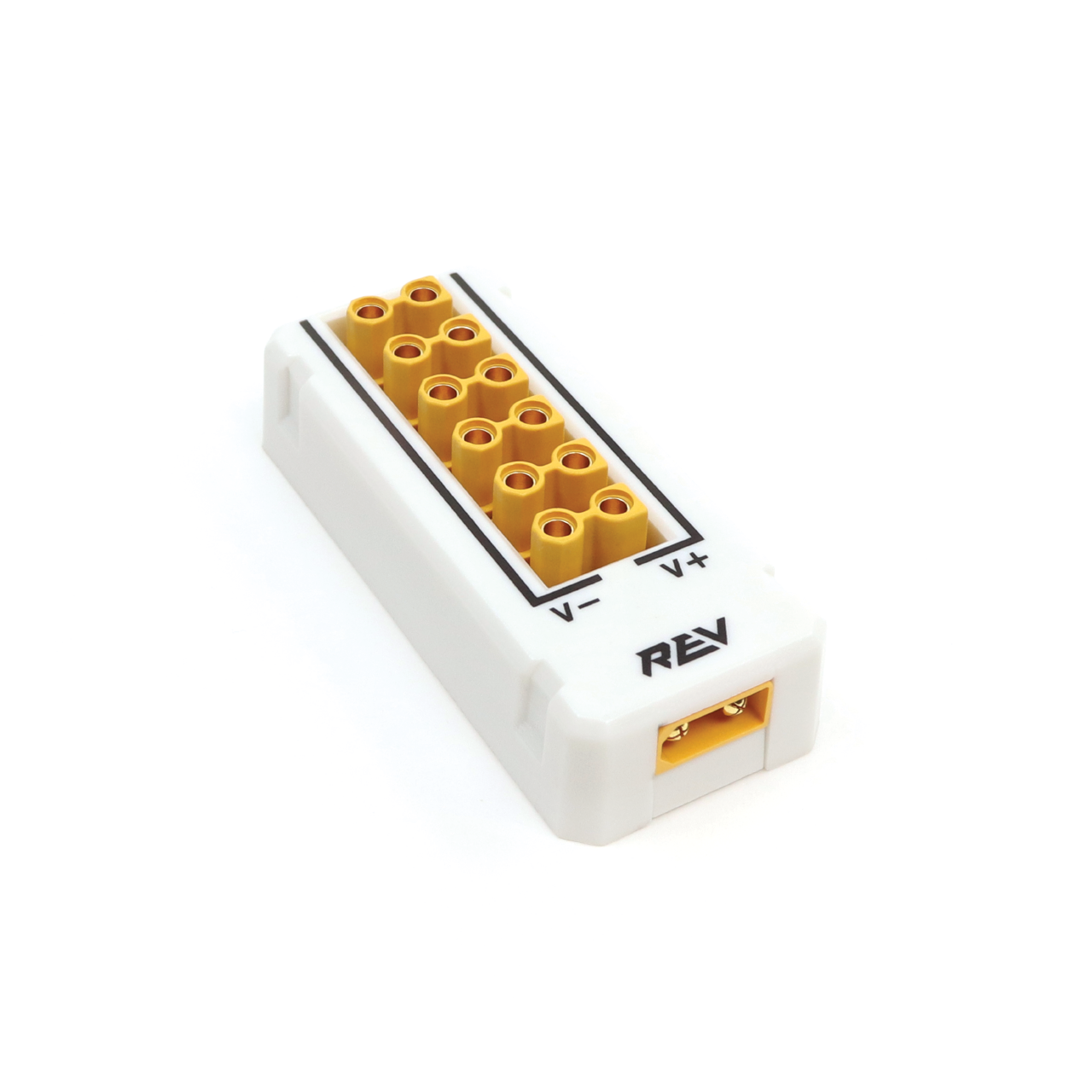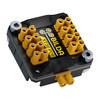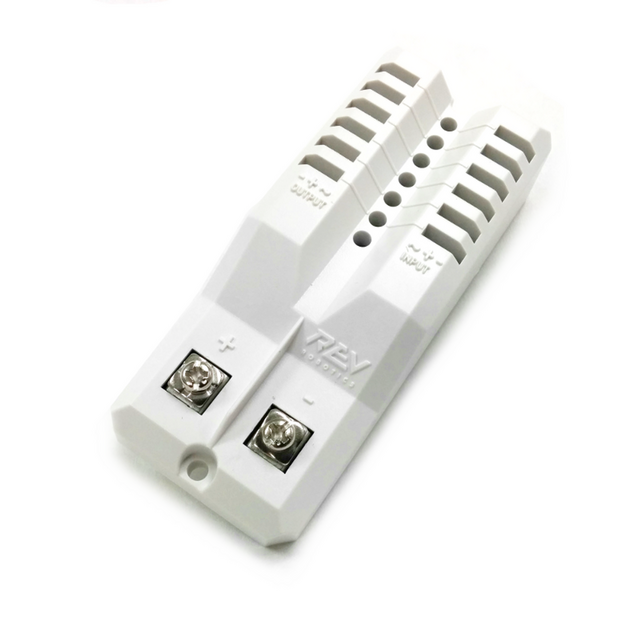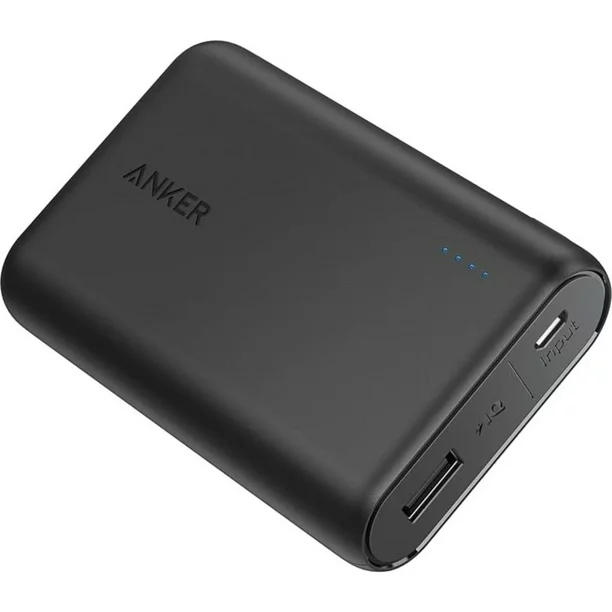Power Distribution
Robot Main Battery
The main power of a robot comes from one 12v battery. The batterys above are samples of these batteries, check the Competition Manual for the full list of batteries. Note that it is typically allowed to replace the connector on the batteries, provided the in-line fuse on the battery is preserved, again check the Competition Manual for full details.
Warning
Be sure to remove the 20A fuse from the in-line fuse holder prior to cutting any wires/connectors if/when replacing the factory default battery connector.
Main Power Switch
One Main Power Switch must control all power provided by the Main Battery. The legal power switches above are representative examples, check the Competition Manual for the full list.
Power Distribution Block
Power Distribution Blocks help to distribute the power to devices such as Control Hubs, SPARKminis, and more. See the Competition Manual for a description of legal Power Distribution methods. The Power Distribution Blocks shown are not the only legal devices for power distribution.
REV Servo Power Module
This is an electronic device (also known as a Servo Power Injector) that boosts the power supplied to 3-wire servos. A REV Servo Power Module has 6 input servo ports and 6 matching output ports. It draws power from a 12V source and provides 6V power to each output servo port. A REV Servo Power Module can provide up to 15A of current across all output servo ports for a total of 90 Watts of power per module. There are more Servo Power Injectors allowed by the Competition Manual.
COTS USB Battery Pack
A Commercial Off The Shelf (COTS) USB battery pack is an auxiliary power source that can be used in specific situations in accordance with the Competition Manual. In the 2023-2024 season, these batteries were deemed permissible to power LEDs and, by extension, COTS light controller sources like the REV Blinkin. However, having a COTS USB External Battery on the Robot carries additional considerations. All teams must ensure their COTS USB Battery Pack:
Is manufactured by a reputable brand.
Is within allowed Watt-hour capacity limits.
Includes standard safety features.
Is secured on the Robot.
Has unused ports covered.
Is always charged properly.
Does not show any signs of distress.
Is never connected to the Robot power
The following sections are intended to help clarify the list above.
Reputable Brands
Far and above, the most important factor regarding the safety of COTS USB Battery Packs is ensuring that the battery pack was manufactured by a reputable brand. International testing of COTS USB Battery Packs has concluded that unbranded batteries, or batteries manufactured by little-known companies, tend to fail more often than batteries from reputable brands. How do you know what brands are reputable and which ones are not? That’s not always an easy thing to determine, however brands such as Anker, Belkin, Otterbox, and BioLite are among the most-used brands in the world. FIRST Tech Challenge recommends choosing an internationally reputable brand, even if the brand is more expensive than a lesser-known brand, as these batteries will be more apt to follow safety and performance guidelines. NEVER choose a COTS USB Battery Pack based on its (low) price alone!
Capacity Limits
The recurring theme in most discussions of COTS USB Battery Packs is safety. The United States Transportation Safety Administration (TSA) has strict limitations on COTS USB Battery Packs aboard aircraft, and FIRST Tech Challenge has adopted the capacity limit restriction. Batteries are limited to 100 Watt-Hours (Wh) or less.
How do you calculate Watt-hours? To calculate Watt-hours of a battery, multiply the Voltage (V) of the battery by its capacity measured in Amp-Hours (Ah). For example, a 12V battery with 3,000mAh capacity has a 36Wh capacity - when capacity is measured in milli-Amp Hours (mAh), divide the capacity by 1000 to get Ah and them multiply by Voltage. However, for COTS USB Battery Packs, the Voltage cells predominantly used in the packs is 3.7V, regardless of the ultimate Voltage provided by the USB ports. Therefore to calculate Wh for a COTS USB Battery Pack, multiply 3.7V by the Ah rating of the pack. A 25,000mAh COTS USB Battery Pack has a rating of 92.5Wh. Using this formula, the maximum capacity COTS USB Battery Pack that is allowed is a 27,000mAh pack.
Standard Safety Features
The major benefit of using a reputable COTS USB Battery Pack brand is the guarantee that the battery pack includes standard safety features, including but not limited to:
Reverse Polarity Protection
Short-Circuit Protection
Over-Charge Protection
Over-Temperature or Over-Heat Protection
Over-Current Protection
You should perform a good-faith effort to determine if your Battery Pack contains these safety features. Often within the documentation provided with your pack it will list the protections offered by the pack. Remember that the Battery Pack likely contains Lithium-Ion or Lithium Polymer batteries that will often explode or catch fire when they fail, and these protections are vital to ensuring that the batteries do not fail prematurely. It is not recommended to use COTS USB Battery Packs without these protections.
Securing the Battery Pack to the Robot
The leading cause of battery failure is physical damage to the battery. For COTS USB Battery Packs this is usually attributed to dropping the battery pack, applying excessive force on the Battery Pack, and subjecting the pack to excessive shock (which might also damage internal components). In order to prevent damage, the Battery Pack should be properly secured within the robot. Tips for securing the battery are:
Use Hook and Loop or 3M DualLock fasteners to secure the battery, OR
Store the battery in a tight-fitting or custom-fit enclosure within the robot that allows the battery to be exposed to air (for cooling), AND
Protect the battery from contact from other robots, game pieces, or field elements that might breach the perimeter of the robot.
If utilizing a COTS USB Battery Pack, it is of utmost importance to ensure that the battery is secured, protected, and ventilated. All batteries (both main batteries and COTS USB Battery Packs) should be easily accessible and be able to be quickly removed from the robot in case of an emergency.
Cover Unused Ports
Some COTS USB Battery Packs contain multiple ports, and it is often that not all ports are in-use while securely mounted to the robot. For example, the COTS USB Battery Pack may have multiple USB ports, a dedicated charging port, and other ports as necessary. Any ports that are not in-use (meaning don’t have a USB connector inserted in them) are at great risk of short-circuiting. The most common reason for short-circuiting is metal fragments that may make their way into the ports, especially swarf due to metal rubbing together, gears wearing, or robot maintenance performed while electronics are present. Any unused ports should be covered using electrical tape, Gaffers Tape, or any other means of preventing debris from entering the ports. Short circuits may present risks of excessive heat, fire, or explosion and all reasonable efforts should be taken to prevent them.
Warning
Never get a COTS USB Battery Pack wet. If it gets wet, follow the manufacturer’s recommended procedure to clean and dry the battery before continuing use.
Charge COTS USB Battery Packs properly
The owners/instruction manual provided with the COTS USB Battery Pack often contains instructions for the proper care and maintenance of the battery pack, including proper charging. Always follow the manufacturer’s recommendations. In addition, these are common best practices for charging your Batteries:
Avoid charging the power bank on places that build up heat, such as on your bed or within a bag.
Unless it’s a solar power bank, NEVER leave your battery in the sun!
Follow the manufacturer’s guidelines on the time required to fully charge your COTS USB Battery Pack.
Avoid leaving your COTS USB Battery Pack on prolonged charge as this may cause it to overheat.
If the COTS USB Battery Pack becomes excessively hot during charging or discharging, unplug it from the power source or powered device immediately and allow it to cool before doing anything else with the battery.
Checking for signs of distress
Most COTS USB Battery Packs are contained within a hard plastic shell in order to protect and package the battery cell(s) within. Therefore it can be difficult to determine if the battery is showing signs of failure and distress. Here are several tips for identifying a failing battery:
Check for Leaking Power Cells. Similar to an acid leak in an alkaline battery, check to see if there are any signs of corrosion or acid leak from the battery pack. This might be difficult to determine, so stay vigilent. If signs of acid or corrosion are present, dispose of the battery per the manufacturer’s recommendations immediately with extreme prejudice.
Look for bulging within the battery casing. When Lithium batteries fail, often they will begin to bulge like a balloon. If the case of the battery shows any signs of pressure from within, dispose of the battery per the manufacturer’s recommendations immediately with extreme prejudice.
Test the battery pack for any non-functional ports. Sometimes non-functional ports can be an early sign of internal damage. DO NOT use batteries that are suspected of being damaged - dispose of the battery per the manufacturer’s recommendations immediately.
Isolate COTS USB Battery Packs from the Robot Power
Great care must be take to NEVER allow the COTS USB Battery Pack to be connected to the main (or any) power system in use by the robot. The COTS USB Battery Pack and connected devices must be completely isolated from the robot electrical system, with the exception of controlling signals provided by the Competition Manual. When using a COTS USB Battery Pack, controlling signals for LEDs powered by the Pack should ONLY connect to allowed compatible devices.

